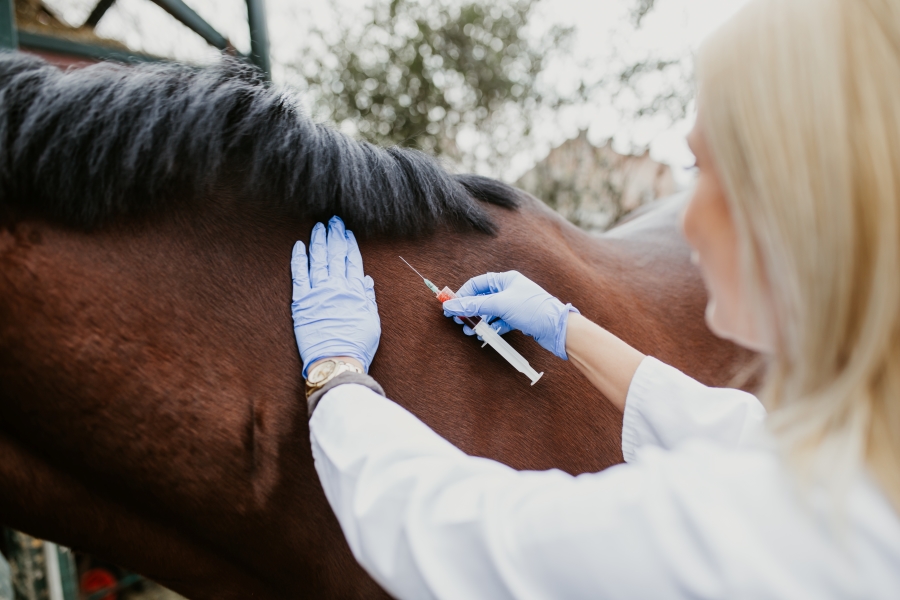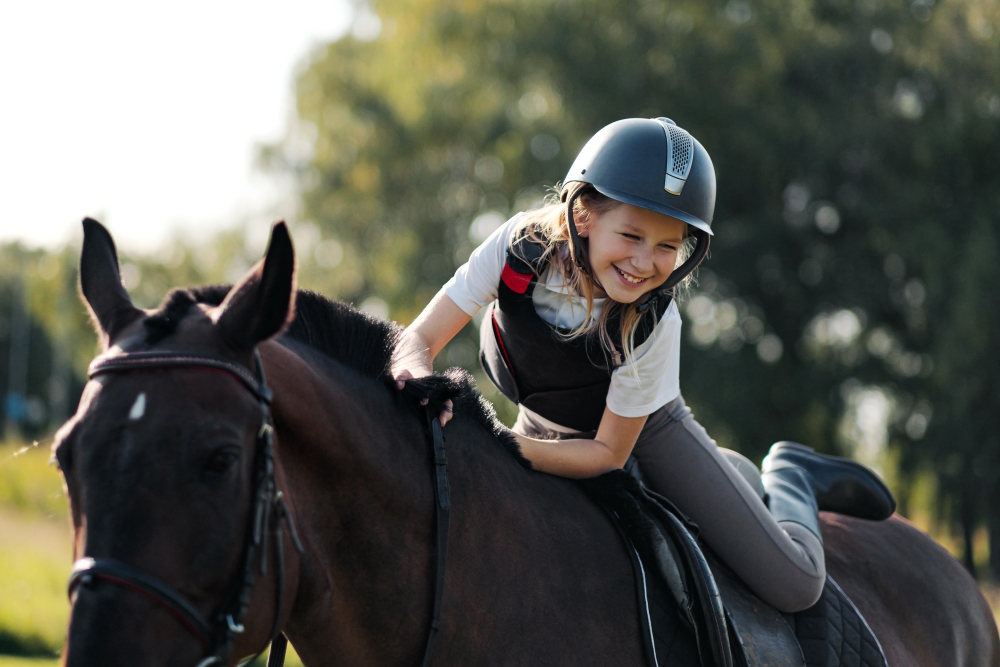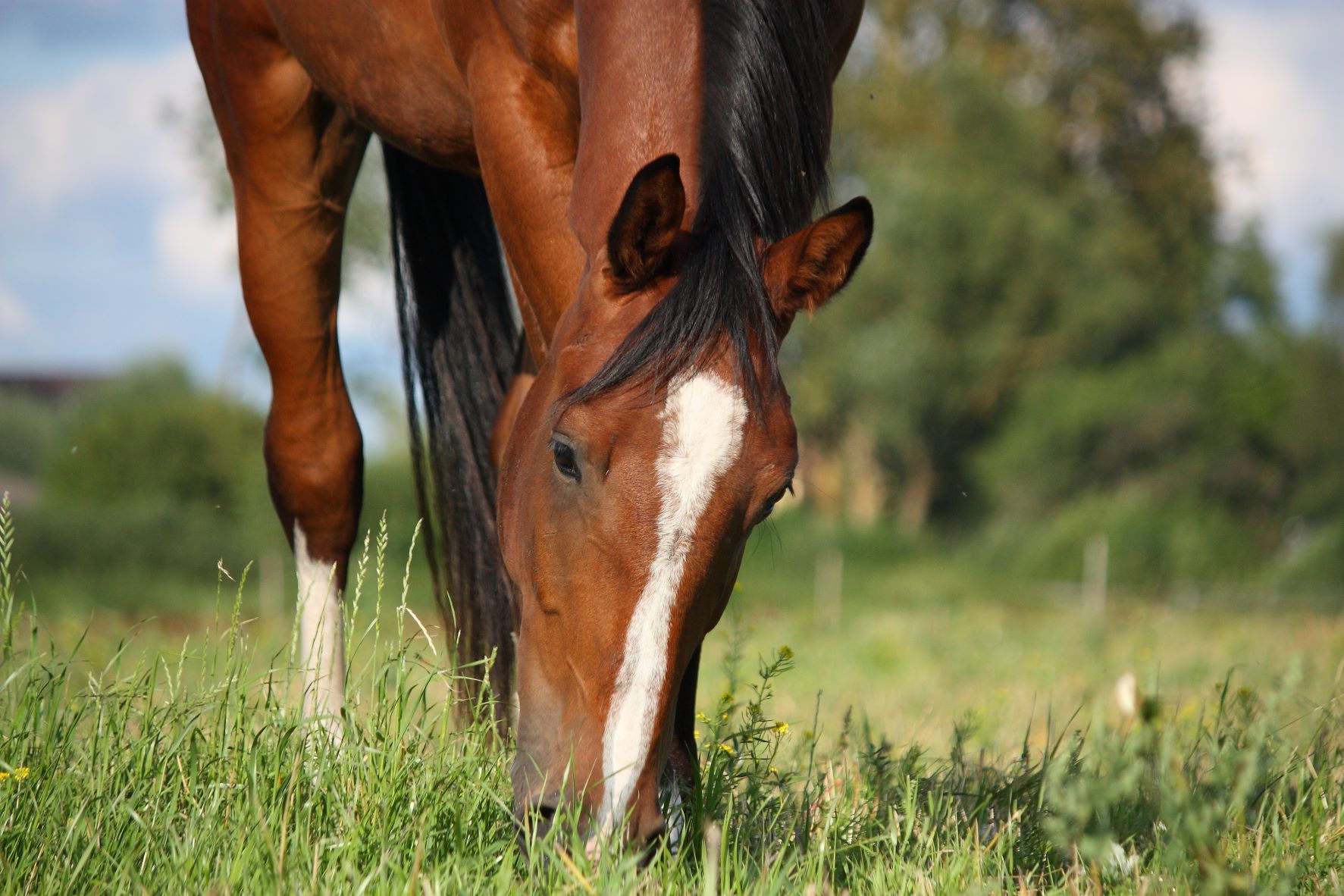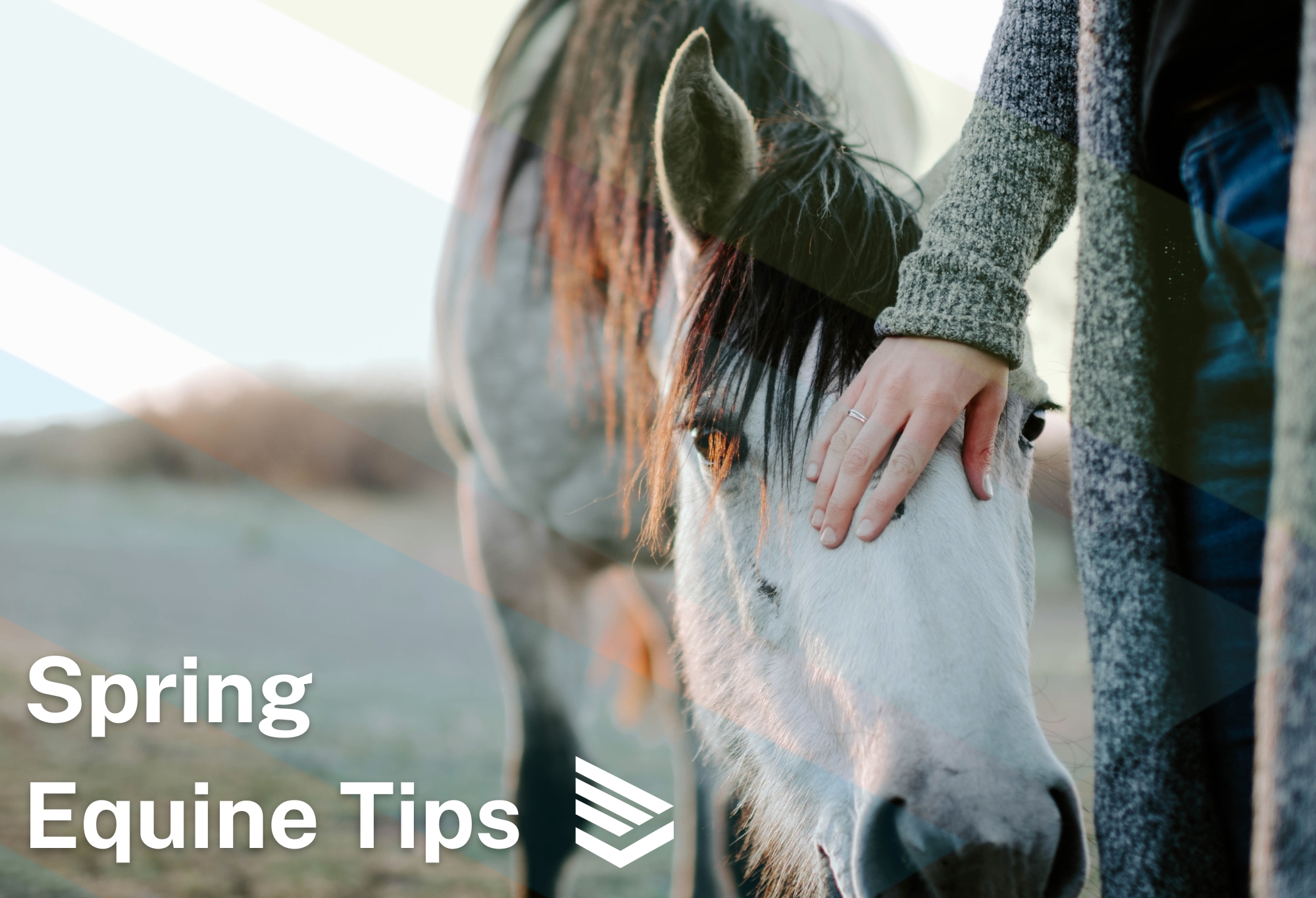Happy (Almost) Spring!
Springtime is eagerly welcomed by everyone in the horse community. After being cooped up all winter, it’s time to get back to spending more quality time with our equine friends. Start off on the right hoof this spring by getting prepared!
GlobalVetLink has compiled some helpful tips for keeping your horse healthy, happy, and comfortable this spring!
Healthy Horse = Happy Horse
Schedule Your Vet Appointments
- Spring is the time to get ahead of diseases your equine partner could be exposed to this coming year. It’s recommended to give West Nile Virus, Eastern Equine Encephalitis, and Western Equine Encephalitis shots each year in the springtime before mosquitos become prevalent. Talk to your veterinarian about additional vaccines your horse may need, like Rabies, Potomac Horse Fever, or Strangles.
- A horse’s teeth never stop growing. As they grow, they can develop sharp, uneven areas that cause pain or issues. To combat this, your horse may need their teeth floated. While your veterinarian is visiting this spring, have them check your horse’s teeth.

- If you plan to travel with your equine partner this year, discuss the necessary tests and documentation with your veterinarian. It's common for many horses to have an EIA (Coggins) test pulled in the spring.
- Keeping your horses healthy includes deworming, which starts in the spring. Talk to your veterinarian about getting a fecal egg count. This can determine how much dewormer your horse needs throughout the year.
Grooming
- Spring shedding. It’s a love-hate relationship for many. Shedding can become uncomfortable and itchy for your horses, so ensure you’re helping them out by currying the excess hair, dirt, and build-up off their coat.
- You might be eager to start washing that winter grime off your horse’s coat. Check out the temperature before diving in. A healthy horse should be able to handle a bath as long as the temperatures are above 50 degrees F. It’s recommended to groom them in the warmest part of the day, so they are able to dry before it gets too cold at night.
Riding & Working Tips
Conditioning
- Your horse likely has been taking it easy this winter while temperatures were cold. When spring comes around, many start thinking about getting their equine partners legged back up. It’s important to start slow and work back up to their old workload. Keep an eye on their breathing and how they are cooling themselves.
- Take plenty of breaks throughout the workout at the beginning.

Proper Cool Down
- Cooling down your horse is crucial to a good workout. Walking your horse after each workout is good practice, especially when getting them back in shape. Walking helps remove the heat and lactic acid from the muscles, as well as assisting heart rate recovery and reducing subsequent muscle soreness.
Transitioning To Pastures
Take It Slow
- A sudden change in a horse's feed can cause colic or diarrhea. Therefore, it’s recommended to change to new feeds slowly over the course of a few weeks. In the spring going from hay to pasture is no different.
- It is best to wait until pastures have grown to a minimum of 6 inches before grazing so that the plants can recover from winter and grow new leaf tissue. Once the pastures are ready to graze, begin with short grazing periods for the first few days (15-30 minutes per day). Slowly increase the grazing periods by an additional 15-30 minutes per day until the horse is grazing for 3-4 hours.

- Grazing muzzles are another solution to reduce pasture intake if turnout time cannot be transitioned gradually. The muzzle allows the horse to drink water and take small bites of grass, preventing them from consuming large amounts of forage.
Fresh Water
- It’s essential that your horse has access to fresh, clean water 24/7. At rest, an adult horse in a cool climate will drink about 6 to 10 gallons of water daily. This number increases significantly as the temperature rises.
- Consider adding salt to your horse’s feed or provide 24/7 access to salt blocks to encourage them to drink more water.
Everyone at GlobalVetLink wishes you plenty of fun, new adventures this spring! We hope that having your equine partner along with you makes it all the better!
Are you and your horse frequent travelers?
Ask your veterinarian about the EECVI (Extended Equine Certificate of Veterinary Inspection) or 6 month health certificate program!
Eldredge, Deb M. “Tips to Help Your Horse Cool down after Exercise.” Horse Health Products, 5 Aug. 2020, https://www.horsehealthproducts.com/horsemans-report/equine-health/tips-to-help-your-horse-cool-down-after-exercise.
Fought, Emily. “10 Spring Horse Care Tips.” COWGIRL Magazine, Cowgirl Magazine, 9 Mar. 2021, https://cowgirlmagazine.com/spring-horse-care-tips/.
Kenny, Laura. “Transitioning Horses to Spring Grazing.” Penn State Extension, 18 Mar. 2022, https://extension.psu.edu/transitioning-horses-to-spring-grazing.
